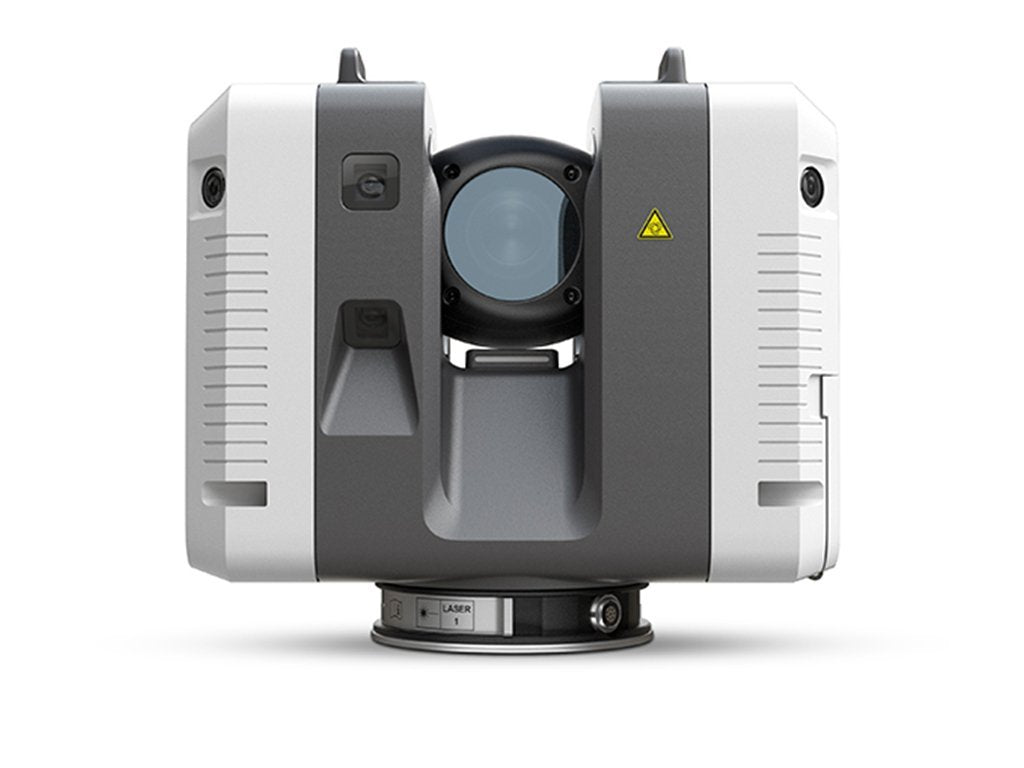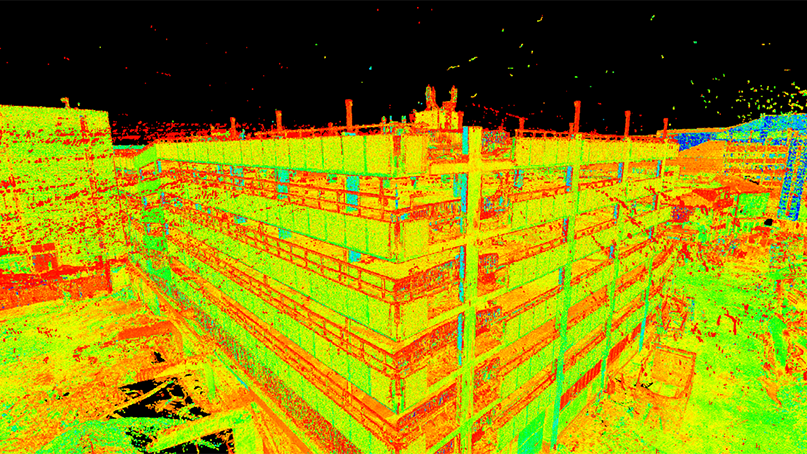How Cutting-Edge 3D Scanning Reinvents Architectural Design
Wiki Article
The Future of Accuracy Measurement: Understanding the Role of 3D Laser Scanning Technology
The landscape of precision dimension is developing with the arrival of 3D laser scanning technology. This development assures improved accuracy and effectiveness across different fields. As sectors start to accept these innovations, the effects for job monitoring and execution become significantly considerable. Nevertheless, the transformative results of this technology prolong past plain numbers and measurements, hinting at a more comprehensive change in how professionals approach their work. What might this indicate for the future?What Is 3D Laser Scanning Technology?
3D laser scanning modern technology is an advanced approach made use of to capture exact three-dimensional measurements of physical objects and atmospheres. This innovation uses laser beam of lights to accumulate data points, which are then refined to create thorough digital representations of the scanned topics. By releasing thousands of laser pulses per secondly, 3D laser scanners can properly tape-record the shape, dimension, and spatial relationships of various surfaces.The process typically entails positioning the scanner at various viewpoint to catch comprehensive data. The resulting point cloud, a collection of numerous data points, can be analyzed and transformed right into 3D designs. Applications of this innovation span numerous fields, consisting of heritage, engineering, and design preservation, where it assists in documentation and evaluation. As a non-intrusive technique, 3D laser scanning reduces disturbance to the environment, enabling for extensive analyses of both existing frameworks and all-natural landscapes, thereby boosting understanding and helping with informed decision-making.
Trick Perks of 3D Laser Scanning in Various Industries
3D laser scanning modern technology supplies significant benefits across numerous industries by providing boosted precision and precision in measurements. This modern technology not only enhances operations yet likewise causes considerable time and expense financial savings. As organizations progressively adopt this ingenious method, the benefits become apparent in boosted job end results and performances.Enhanced Accuracy and Precision
The assimilation of laser scanning technology has actually transformed the way sectors come close to measurement and data collection. This innovation provides an unmatched level of accuracy, catching numerous information points in a single check. Therefore, professionals across various areas, such as production, architecture, and design, can develop extremely described 3D designs that show real-world problems. Enhanced precision reduces mistakes connected with typical dimension techniques, guaranteeing that styles and constructions are based on accurate data. In addition, the ability to catch elaborate information permits much better evaluation and decision-making, inevitably leading to improved end results. By leveraging 3D laser scanning, sectors can attain higher criteria of high quality, making it a very useful device for specific measurements.Time and Cost Efficiency
Efficiency in time and expense is a substantial advantage supplied by laser scanning innovation, transforming task implementation across different industries. By rapidly capturing in-depth 3D data, laser scanning minimizes the time invested in hand-operated measurements and lessens the risk of mistakes. This quick data purchase facilitates quicker decision-making and job timelines, allowing teams to assign resources a lot more effectively. In addition, the technology lowers the need for rework, as precise models lead to better preparation and execution. Industries such as building and construction, architecture, and manufacturing benefit considerably, seeing lower prices connected to labor and materials. On the whole, 3D laser scanning not only improves functional effectiveness yet additionally adds to considerable cost savings, making it a very useful device in today's affordable landscape.Applications of 3D Laser Scanning in Style and Construction
As building and building and construction projects grow significantly intricate, the fostering of laser scanning technology has actually arised as a transformative solution. This innovation provides accurate measurements and detailed 3D representations of existing structures, promoting even more precise planning and design procedures. Engineers use 3D laser scanning to create electronic versions that record complex details, ensuring that improvements and brand-new building and constructions straighten completely with existing conditions.

The Role of 3D Laser Scanning in Production Processes
3D laser scanning plays an essential function in manufacturing procedures by enhancing top quality control via accurate dimensions and data collection. This modern technology allows makers to identify discrepancies early, reducing errors and waste. In addition, it improves manufacturing workflows by facilitating much better interaction and coordination amongst groups.Improved Quality Assurance
click over here Quality control in producing procedures has actually been reinvented by the integration of laser scanning innovation. This ingenious strategy allows for specific dimensions and comprehensive assessments of parts, ensuring that they satisfy rigorous top quality standards. 3D laser scanning captures elaborate geometries and resistances, making it possible for manufacturers to discover inconsistencies from layout specifications swiftly. This innovation considerably minimizes human mistake connected with standard dimension techniques, supplying consistent and trustworthy information. By facilitating real-time high quality assurance, it allows proactive adjustments in the production procedure, inevitably bring about boosted item integrity and client contentment. As markets progressively embrace 3D laser scanning, the capacity for improved quality control comes to be obvious, noting a transformative shift in manufacturing practices.Streamlined Manufacturing Process
Efficient manufacturing operations are significantly gaining from the integration of laser scanning technology in making processes. This technology permits for fast, accurate dimensions of elements and settings up, significantly decreasing the moment needed for setup and modifications. By capturing specific geometry, makers can quickly determine discrepancies between style specifications and actual products, allowing immediate restorative activities. Furthermore, 3D laser scanning helps with the smooth transfer of information between layout and manufacturing teams, improving cooperation and decreasing mistakes. The technology likewise sustains digital twin development, permitting real-time surveillance and optimization of producing procedures. Therefore, organizations can attain greater efficiency, minimized waste, and boosted general performance, ultimately driving competitive benefit in the marketplace.Protecting Heritage: How 3D Laser Scanning Aids Cultural Conservation
As cultural heritage websites encounter the risk of wear and tear and devastation, cutting-edge modern technologies such as laser scanning become vital devices for preservation initiatives. 3D laser scanning captures intricate information of historic frameworks and artefacts with remarkable precision, creating digital designs that offer several functions in preservation. These versions permit accurate documentation of current conditions, enabling specialists to monitor modifications in time and address evaluate wear and tear dangers.Furthermore, laser scanning helps with virtual restoration, aiding conservators establish prepare for repair services or recreating lost aspects without intrusive approaches. The technology also aids in enlightening the general public, using immersive experiences through digital excursions that highlight the relevance of these sites. By incorporating 3D laser scanning into social conservation methods, stakeholders can assure that heritage is preserved for future generations while boosting understanding and admiration of historic contexts.
The Future Outlook: Improvements and Fads in 3D Laser Scanning Innovation
3D laser scanning technology has actually currently transformed numerous industries, its future pledges also better improvements that will certainly enhance access, rate, and precision. Arising fads indicate an increase in assimilation with expert system and machine knowing, causing smarter data processing and evaluation capacities. This harmony will certainly make it possible for quicker decision-making and more specific end results in areas such as engineering, building, and heritage preservation.In addition, advancements in hardware are expected to yield lighter, a lot more mobile scanning gadgets, equalizing accessibility for smaller sized firms and specific professionals - 3D Scanning. As software remains to evolve, easy to use applications will streamline complicated workflows, making 3D scanning more obtainable to non-experts
The surge of cloud-based options will promote real-time partnership and data sharing among stakeholders, paving the means for streamlined task administration. Jointly, these fads signal a future where 3D laser scanning modern technology ends up being a necessary tool in an also broader range of applications.
Frequently Asked Concerns
How Much Does 3D Laser Scanning Technology Price?

What Are the Abilities Needed to Run 3D Laser Scanners?
Operating 3D laser scanners needs technical proficiency, interest to information, spatial awareness, knowledge of software program for data handling, and an understanding of surveying concepts. In addition, solid analytical abilities and logical skills are necessary for effective operation.Can 3D Laser Scanning Integrate With Various Other Technologies?
Yes, 3D laser scanning can incorporate seamlessly with other modern technologies, such as Geographic Information Equipment (GIS), Structure Details Modeling (BIM), and augmented reality, enhancing data precision and helping with better evaluation across different sectors and applications. - 3D ScanningWhat Is the Common Scanning Variety Of These Instruments?
The typical scanning variety of 3D laser scanning gadgets differs widely, usually between 50 meters to over 1,000 meters, relying on the version and application, affecting their viability for various precision measurement tasks and settings.Just how Lengthy Does a 3D Laser Scanning Task Take?
A 3D laser scanning task commonly takes anywhere from a few hours to several days, depending on elements such as Going Here project size, intricacy, and called for information. Each job's timeline can vary significantly based upon these components.The landscape of precision dimension is progressing with the development of 3D laser scanning innovation. 3D laser scanning innovation is an innovative method used to capture precise three-dimensional measurements of physical objects and environments. 3D laser scanning technology offers substantial benefits across different sectors by providing improved accuracy and precision in dimensions. 3D laser scanning innovation has actually already transformed numerous markets, its future pledges also higher developments that will boost speed, precision, and ease of access. 3D laser scanning technology generally costs in between $10,000 and $100,000, depending on the equipment's attributes and capabilities.
Report this wiki page